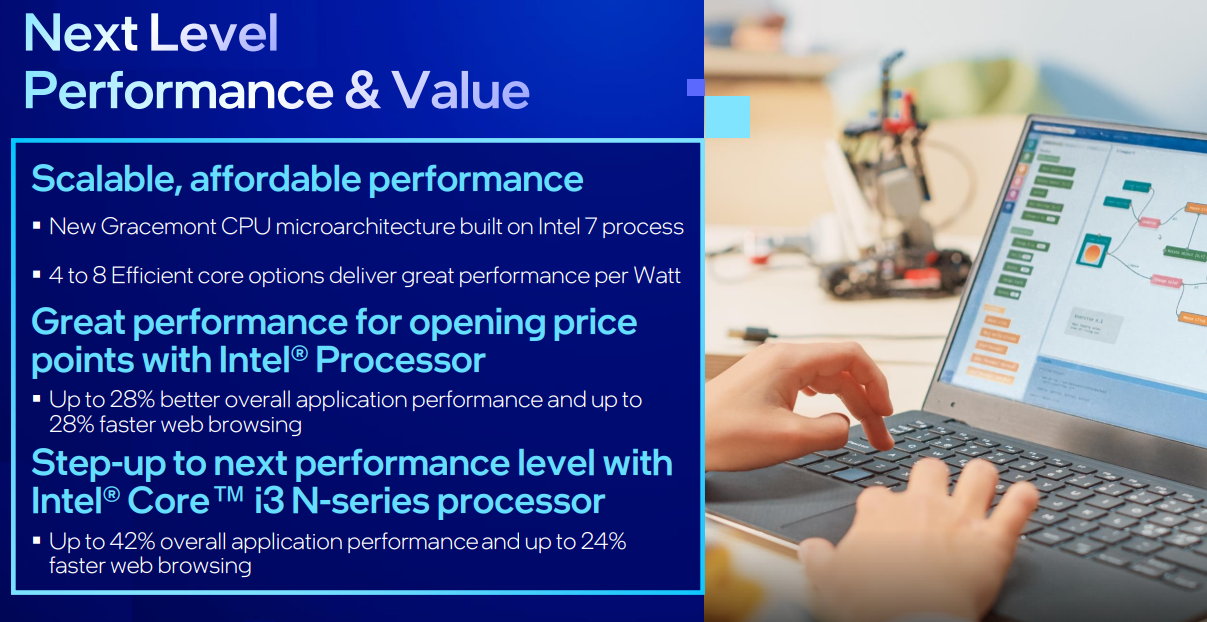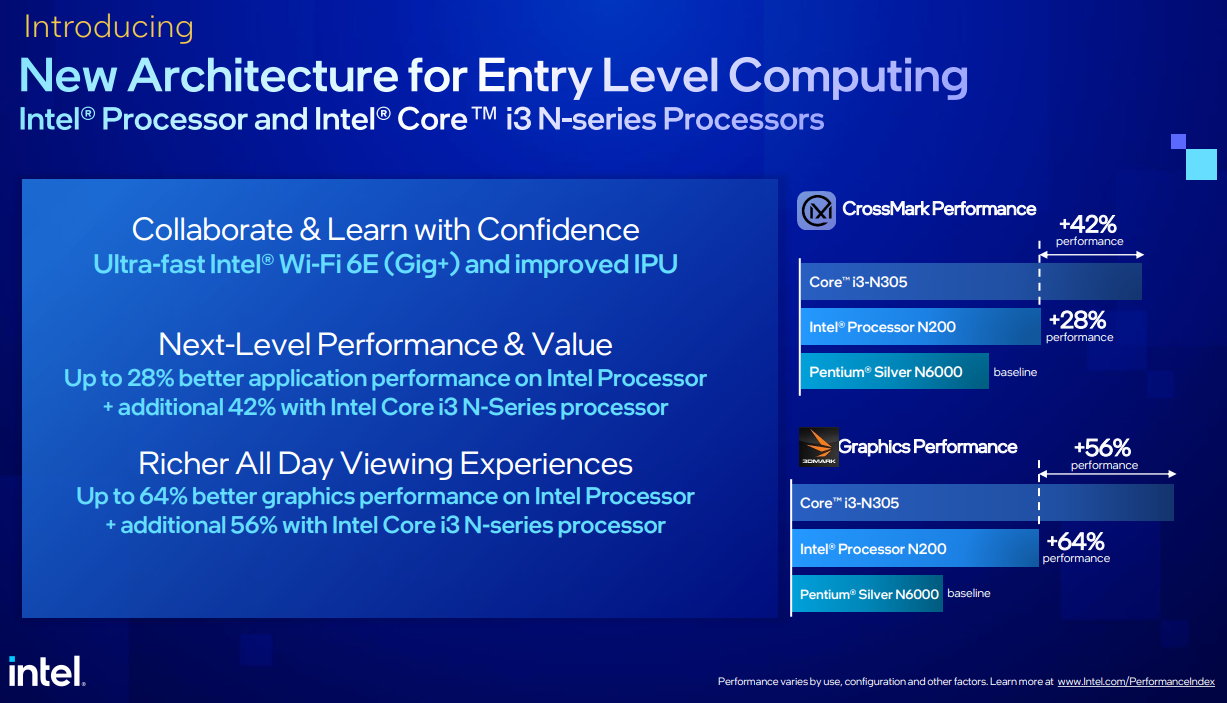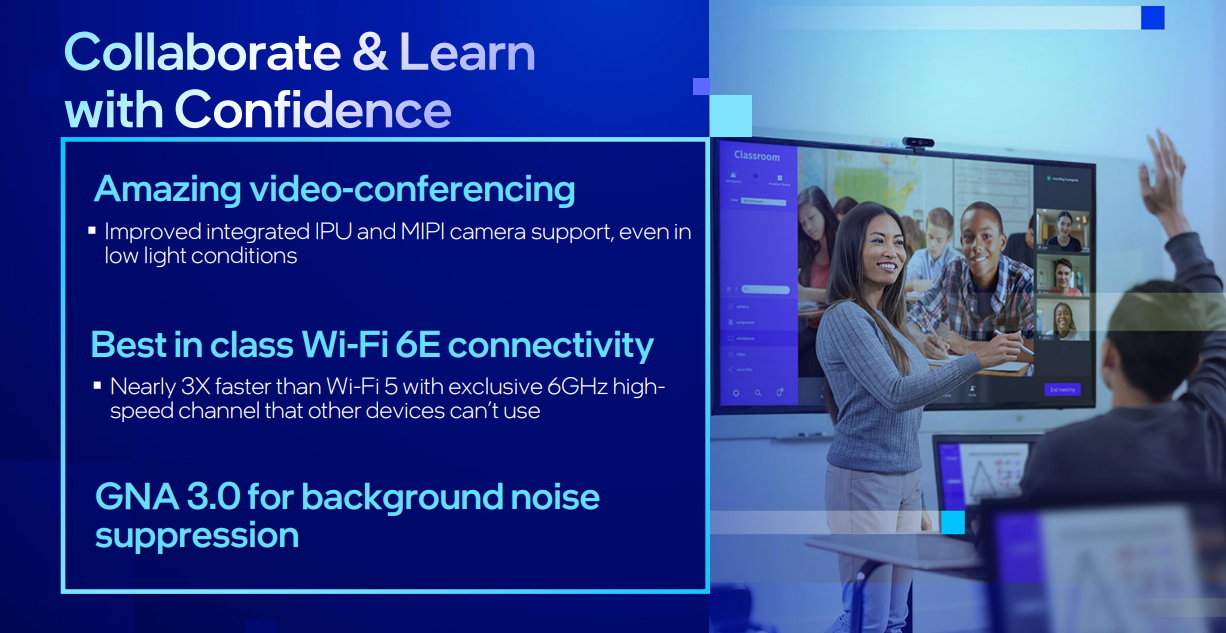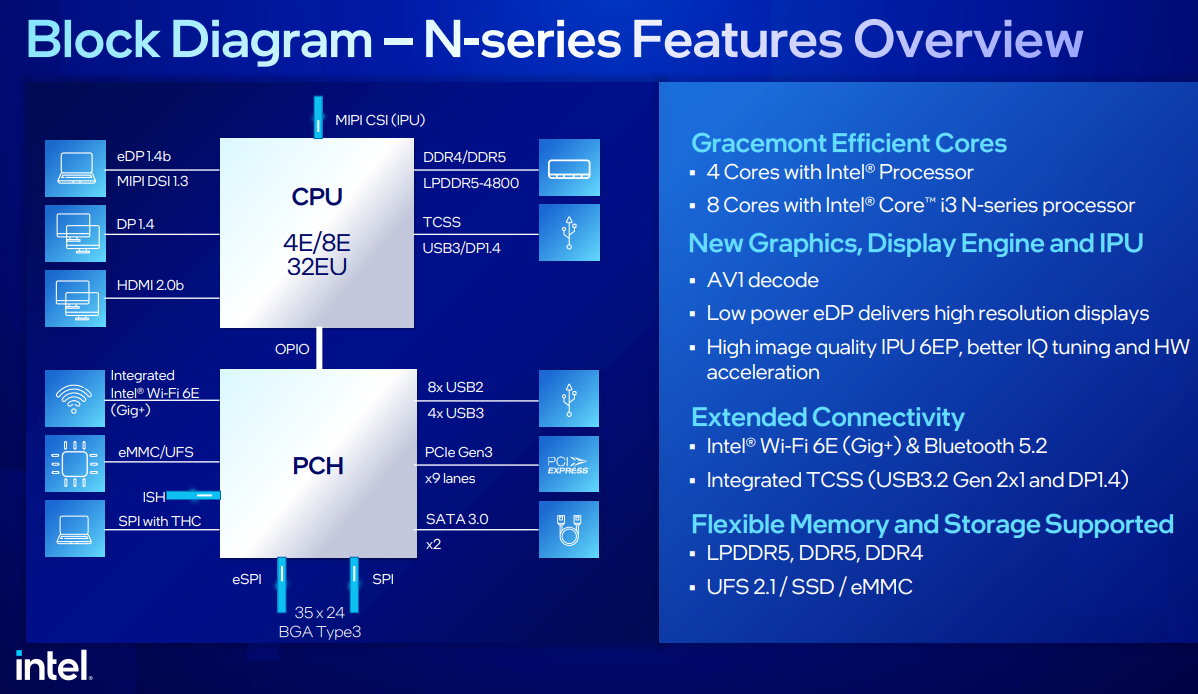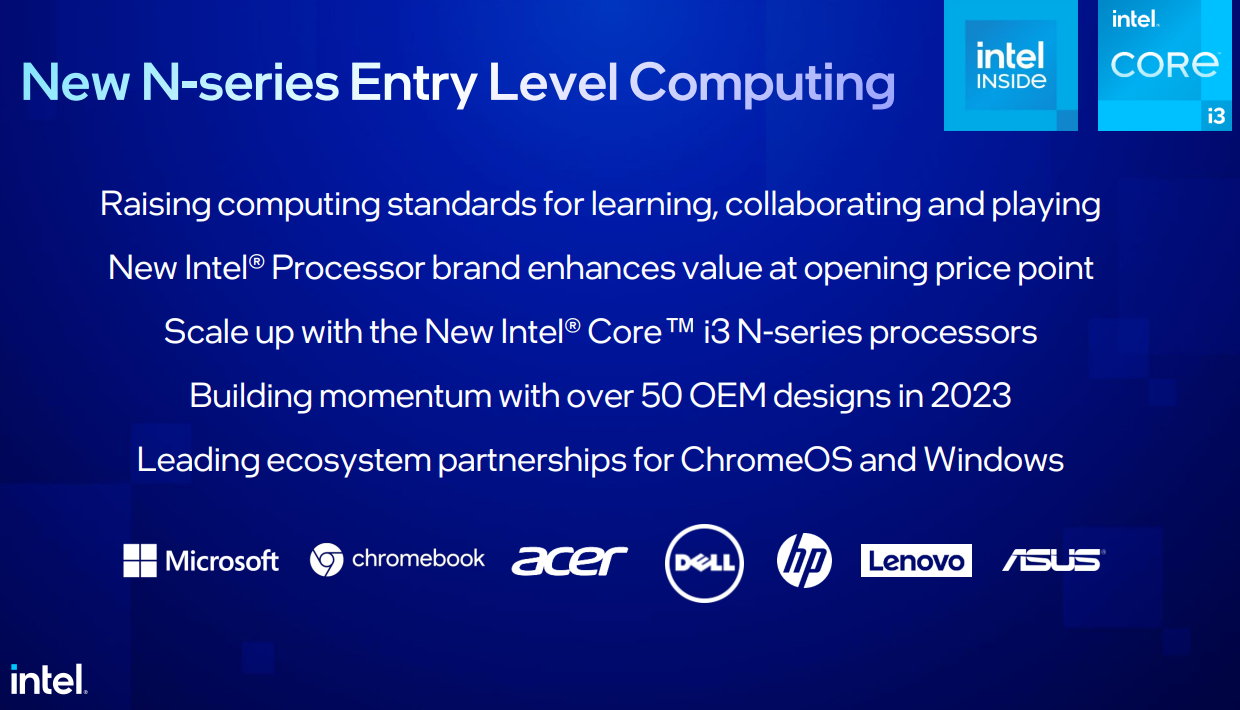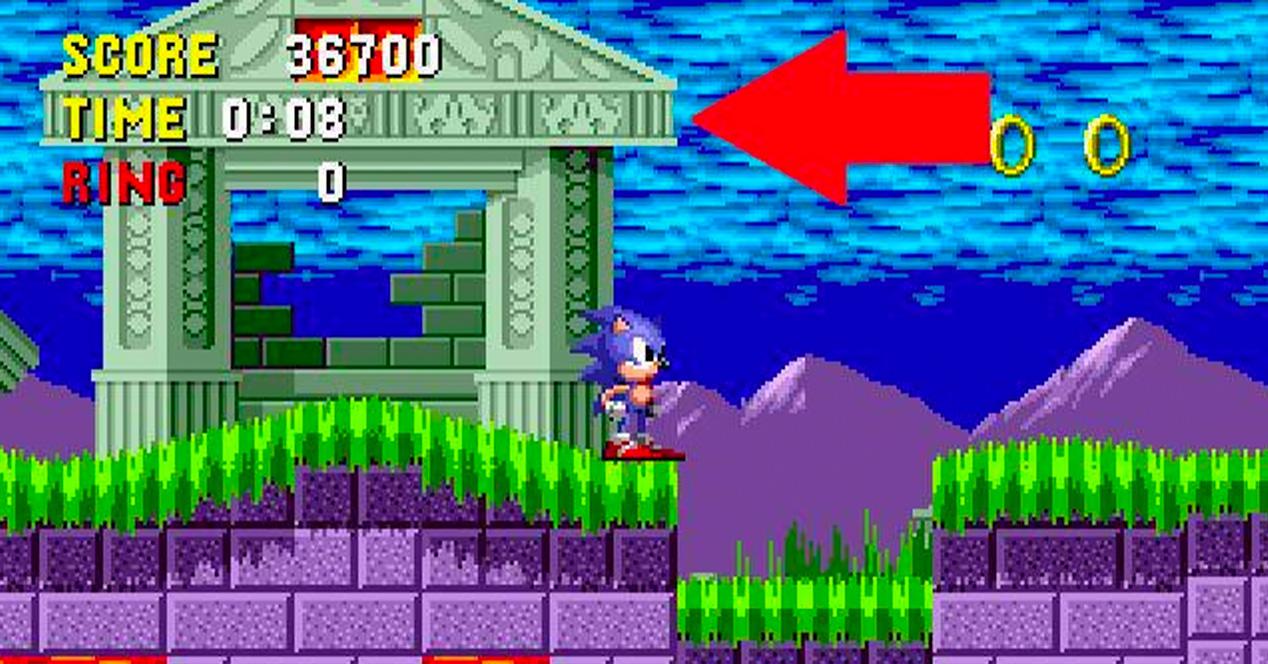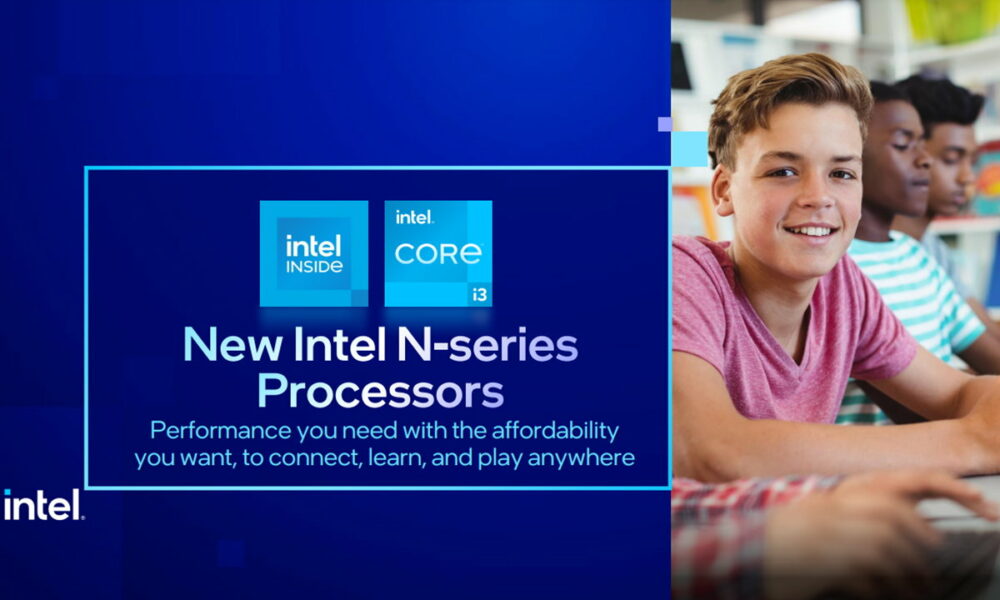
The Intel N series are the new processors that the chip giant has presented at CES along with the Raptor Lake for laptops and other solutions to complete the 13th Gen platform for desktops launched last fall. They are intended for cover input range to personal computers and will replace the gap left by Celeron and Pentium solutions that were discontinued.
The Intel N series are built on the latest process technology, Intel 7, and under the new Gracemont microarchitecture. Faced with the hybrid architecture of its older brothers that combine P and E cores, these only use E (efficient) cores in quantities of 4 or 8 cores/threads of native processing and are accompanied by an integrated Intel UHD graphics capable of outputting video on up to three screens.
Intel estimates that the N-200 processor will offer a 28% overall performance improvement over the previous Celeron Silver, while the Core i3-N3xx will offer additional CPU performance improvements that the company puts at 42%. As for the performance of the integrated graphics, they will also be much faster, 64% better in casual games and an additional 55% in the case of Core.
The N series includes an improved Image Processing Unit (IPU 6) that supports higher resolution cameras at lower cost, GNA 3.0, for intelligent noise suppression and support for MIPI cameras that adjust to low light conditions. (Smart Drug) This unit is clearly focused on working with educators and students, a preferred segment of use for these processors.
These processors support Wi-Fi 6E and Bluetooth 5.2 wireless standards, can be equipped with type RAM memories DDR4, DDR5 and LPDDR5, to increase the flexibility of use of hardware partners. Also UFS, eMMC and SSD for the internal storage section. Equipment with these CPUs must guarantee an autonomy of 10 hours.
Intel N series: models
Intel has announced four different models for this platform, although more are likely to come in the future. It is worth highlighting the premiere of the “Core” brand in this type of basic platforms, in the two fastest processors of the platform.
- Intel Core i3-N305: 8 cores/threads with a maximum frequency of 3.8 GHz. 6 Mbytes of third-level cache. Intel UHD GPU with 32 execution units and maximum frequency of 1.25 GHz. TDP of 15 watts.
- Intel Core i3-N300: 8 cores/threads with a maximum frequency of 3.8 GHz. 6 Mbytes of third-level cache. Intel UHD GPU with 32 execution units and maximum frequency of 1.25 GHz. TDP of 7 watts.
- Intel Core N200: 4 cores/threads with a maximum frequency of 3.7 GHz. 6 Mbytes of third-level cache. Intel UHD GPU with 32 execution units and maximum frequency of 750 MHz. TDP of 6 watts.
- Intel Core N100: 4 cores/threads with a maximum frequency of 3.4 GHz. 6 Mbytes of third-level cache. Intel UHD GPU with 32 execution units and maximum frequency of 750 MHz. TDP of 6 watts.
Intel ensures that they will be Over 50 different designs those that reach the market this year with the new N series, manufactured by partners such as Acer, Dell, HP, Lenovo and ASUS. Intel will support both the Chrome OS and Windows operating systems with these solutions that will be of interest to those looking for entry-level, low-power, and cheapest PCs on the Intel platform.
